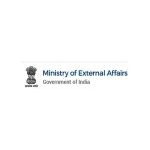The 20th century witnessed a revolution in human health and well-being. Average life expectancy at birth in many industrialized countries nearly doubled from around 45 years in 1900 to more than 70 years in 1999. Less developed countries also enjoyed dramatic, albeit less extensive, improvements in living standards and declines in mortality. The sweeping improvements in health and success at controlling such ancient human foes as smallpox and cholera created expectations that everyone could attain good health.
As some health threats have receded, however, other threats have emerged—such as Emerging Infectious Diseases and new cancer-causing substances. Some disease-causing microbes have become resistant to medicines commonly used to treat them. Aspects of modern life appear to encourage unhealthy behaviour, such as smoking and high-fat diets. And, there is a substantial gap in mortality and disability among and within countries. A growing recognition of this disparity prompted the World Health Organization (WHO) to mount an international effort to attain “health for all.”
Can the world attain good health in the 21st century? The health revolution will continue, driven by marvelous new technologies and a wealth of new medical knowledge. These medical advances may enable health professionals to conquer these new health threats and future world citizens may live long and healthy lives. But many factors other than medical services—from the individual level to the international arena—play a role in attaining and maintaining health. A population’s educational level, economic well-being, and access to health information and services, for example, have a profound influence on health. These population characteristics reflect many socioeconomic and political variables.
The Shanghai Declaration1 emphasized that health and well-being are essential for sustainable development. National health policies, strategies and plans informed by the Sustainable Development Goals (SDGs) and the Health 2020 policy framework of the WHO are vital to achieving health improvement. Every country needs to plan health development within its overall SDG-informed development goals, and to identify investment priorities that will have the greatest potential impact on health and well-being
A new focus is needed on “upstream” determinants of health, supported by evidence favouring a paradigm shift from a cure-oriented model of health towards a health-promoting and preventive model. Such a model would include improved health outcomes and reduced inequities in health, and be based on evidence of economic value and providing for a progressive shift towards more health-focused development. Health systems are a key component of health policy, and remain under great pressure, in terms of availability, access and delivery. These pressures include demographic changes; the expansion of comorbidities; diagnostic, therapeutic and pharmacological advances; the rising expectations of the public; litigation; the ever-present pressures caused by the need for quality, efficiency and cost-control; and some specific disease burdens. The breadth of potential public health aspiration and engagement requires prioritization, and a focus on “what matters most” to the health of populations.
In response to such challenges, success can only be achieved through programmes which are systematic and scaled-up, driven by public health intelligence and informed by evidence, with sound infrastructure, business plans and programme management. Such complex programmes for population-level change may well involve three points of intervention: population level (healthy public policy, legislation, regulation, licensing); systematic and scaled intervention through services (health, social and third sector); and systematic community engagement, including the private productive sector (about which attitudes often differ – it may be thought of either as a partner or as an antagonistic element).
Public health in the Genomic Era
There are three stages of thinking. The first era, from the 1850s to the 1960s, had a biological focus, emphasizing the diagnosis and management of acute diseases. The aim was to improve life expectancy. Patients were passive, inexperienced and deferential. The second era, from the 1950s to the present day, focused more on the reduction of chronic disease, improvements in modifiable behavioral determinants and the integration and coordination of care at the level of the individual. Here, the patient becomes an active partner in care. The third era, from 2000 onwards, focuses on creating capacities to achieve goals in equitable health improvement, health over the life-course and the development of community-accountable health development systems at the population level, which are responsible both for service delivery to individuals and for equitable health improvement in the population as a whole. Here, individuals and communities are co-designers of health, using the concepts of health literacy and empowerment to become involved on their own behalf in health policy and service development, and aligning different interests and capacities to develop new paradigms and shared policy commitment.
Some new models are emerging, although these are at an early stage of development and evaluation. Crucially, these models focus on improving health outcomes for geographically defined populations, including dealing with upstream socioeconomic, environmental, behavioral and developmental determinants of health. Within these models, multiple health and human service sectors share leadership, create a common purpose, and align and distribute accountability for addressing social and developmental conditions.
The public health function is thus an organized, multisectoral, societal function, involving government as well as other dimensions of society (civil society, the media, etc.). Ultimately, because of the government’s responsibility for the human right to health, the function rests with government. The public health function should be an advocate for the paradigm shift towards a focus on health, well-being, health promotion and disease prevention, provide a strong and consistent voice on behalf of vulnerable populations and address health inequities. The public health function will be needed centrally, regionally and locally. To achieve these goals, modern public health systems must work in a horizontal and distributed way, identifying matters of public health concern and crafting the public health narrative.
Good Health and Well-Being
SDG 3 is ambitious, setting out to reduce or eliminate a number of health-related problems, including: Maternal mortality and preventable deaths of newborns and young children; Communicable diseases like AIDS, tuberculosis and malaria, as well as deaths from non-communicable diseases, substance abuse and mental illness; Ensuring universal health coverage, and especially access to reproductive health services. The health impacts of the environment, including hazardous chemicals, pollution and climate change.
UHC assures all types of health service and protects all citizens financially in any conditions due to illness. Although healthcare is a necessary component of a satisfactory quality of life, it is unfortunately all too stratified along economic lines. Those living in poverty often do not have access to high quality healthcare and sometimes healthcare outright. A variety of factors contribute to these inequities, such as insurance coverage, health literacy, geographic and financial accessibility, cultural differences, among others. Policies like the ACA, Ayushman Bharat, COBRA, and NHS have been implemented to improve healthcare quality and access, but sustained efforts are required to break this vicious cycle.
Healthcare must be Affordable and Accessible, of High Quality. Universal health coverage must be high quality to improve patients’ health outcomes. The three priorities of health care delivery – cost, quality, and access – need not be at odds with each other. Greater use of health care facilities due to lower costs and shorter distances to travel will only lead to better health outcomes if quality of care is guaranteed. We must make high-quality healthcare services affordable and accessible in order to effectively implement universal health coverage. Simply providing access for more people to lower quality care won’t achieve universal health coverage.
Good health and well-being for all is essential to eliminating inequality and poverty and ensuring societies are resilient in the face of the steep economic and climate-related challenges ahead.
Challenges to delivering quality healthcare
Poor-quality care is wasteful, costly, and dangerous. In addition to the human cost, poor quality also has an economic cost. Poor productivity and wastefulness, resulting from poor quality of health care, costs these countries around $1.4 trillion to $1.6 trillion per year. Poor-quality care proves costly for societies when unhealthy adults are less productive at work and unhealthy children cannot perform well at school.
High-quality care is cost-effective and leads to an earlier and higher return on investment. Approximately 15% of hospital expenditures in high-income countries are used to correct preventable complications of care and patient harm. This is a price that is an inconvenience to high-income economies and completely unaffordable for low- to middle-income countries. Quality health services make health systems resilient. They are prepared for anything, can maintain core functions amongst changing situations, and are informed by lessons learned, constantly adapting and improving. Quality health services make health systems patient-centered. Improving quality requires a holistic approach. Countries that want to improve quality of care need to consider interventions across different domains (leadership, information, patient and population engagement, regulation and standards, organizational capacity, models of care) across different levels of the health care system.
Window of Opportunity
Investing in Health, Universal Health Coverage, Accessibility, Tackling Inequalities, Quality of care, Sustainable Environment are fundamental to achieving new milestones in public health. Culture is critically important to public health. Culture shapes our beliefs and behaviors around health and impacts our health outcomes. Culture enables social cohesion, belonging, and the preservation of cultural heritage and traditions across generations. Embracing culture and cultivating a sense of community belonging have positive impacts on health outcomes. Ayushman Bharat is one of the revolutionary steps of New India. It symbolizes the collective resolve and strength of 140 crore people as India. It is a holistic solution for a healthy India. Strengthening public health sector in the countries is the need of the hour.
The increasing use of the low cost public health facilities would help in achieving the twin objective of the out-of-pocket spending on health care and reduction of poverty. Focus on disease prevention and health promotion is absolutely essential. Science-driven learning and collaboration across countries and cultures has revolutionized health care across the globe. There is a huge responsibility ahead to motivate action to tackle future health challenges for improved well-being and longer, healthier lives for everyone.
(The Author is FRCP (London), FACP, FAMS, FRCP (Edin), MD HA (AIIMS), FRIPH (England), FIMSA, MHSM (London), Fellow New York Academy of Sciences. Postdoctoral Fellowship, Faculty of Medicine, University of Bristol (England), Doctor of Education in Educational Leadership (USA).Email: [email protected])





